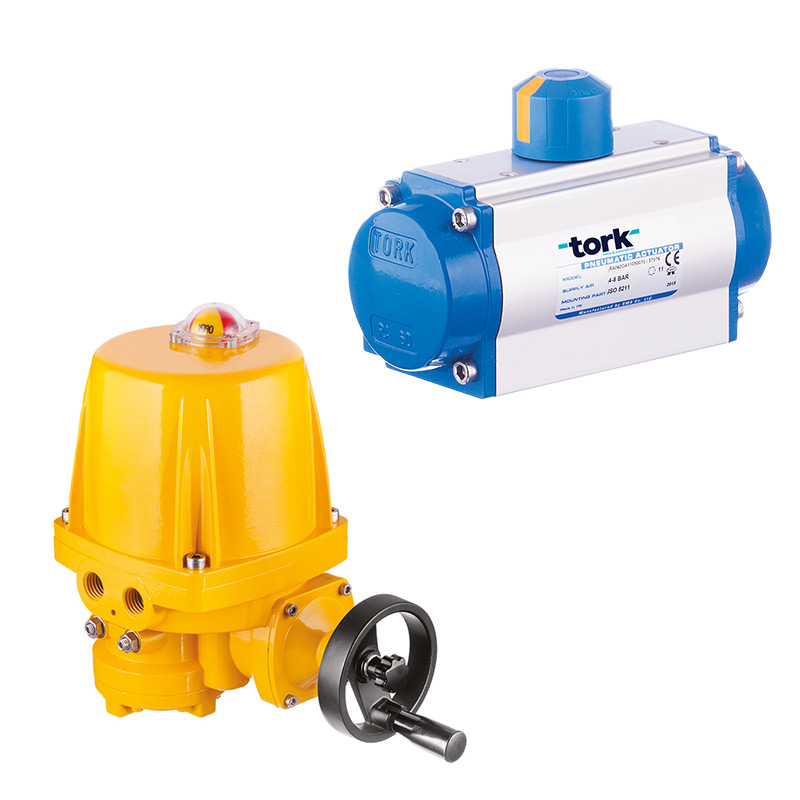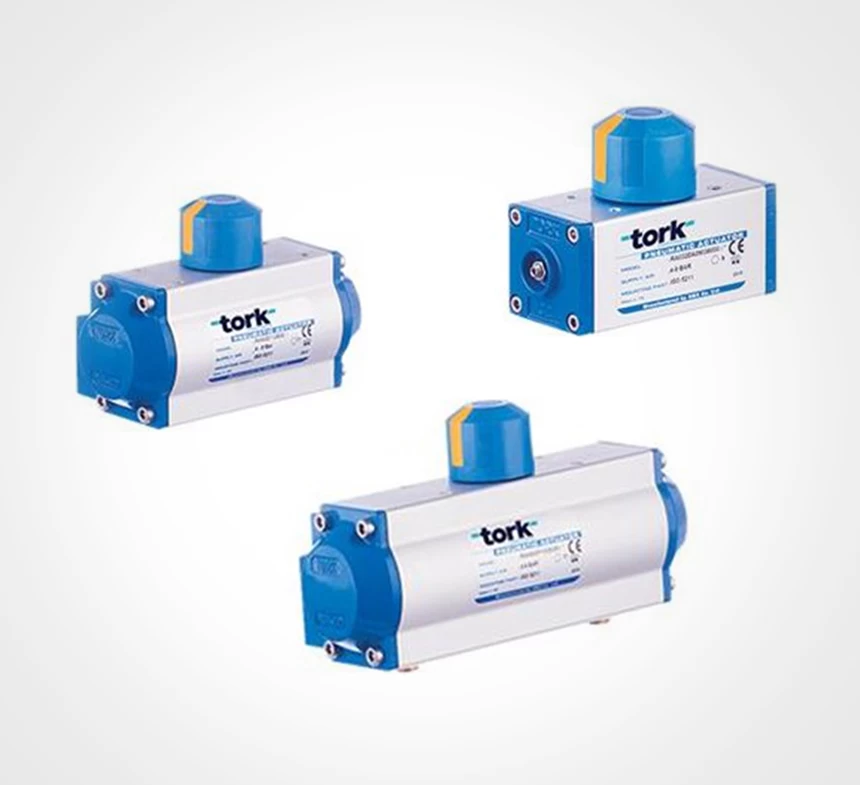Pneumatic actuators are actuators that work with a piston and shaft mechanism. It is generally divided into two: double-acting and single-acting:
Double-acting pneumatic actuators perform opening and closing movements by supplying air to two ports in front of the actuator.
In single-acting pneumatic actuators, air is supplied to a port and opening and closing operations are performed from there. The springs between the cover and the piston provide the second movement from the other port. In this way, air consumption is saved. In addition, it ensures that the valve remains closed when electricity and air are disconnected. In this way, the safety of the system is ensured.
Pneumatic actuators are actuators working with piston and shaft mechanisms. Generally, it is divided into two double-acting and single-acting:
Double-acting pneumatic actuators open and close by supplying air to the two ports in front of the actuator.
In single-acting pneumatic actuators, air is supplied to a port and opening and closing operations are performed from there. From the other port, the second movement is provided by the springs located between the cover and the piston. In this way, air consumption is saved. In addition, it ensures that the valve remains closed when the electricity and air connection is cut off. In this way, the safety of the system is ensured.

What Parts Do Pneumatic Actuators Consist of?
Pneumatic actuators have 4 main parts:
1. Shaft: Provides our basic movement.
2. Stopper: It is placed on the shaft.
3. Piston: Provides movement with gear around the shaft
4. Body: The shaft, stopper and piston are placed in the body, and then the covers are mounted on both sides of the pneumatic actuator.
4 Important Points in Pneumatic Actuators
- The most important issue with pneumatic actuators is the sealing elements. Since it is an air-operated system, small wear on the sealing elements will cause your pneumatic actuators to leak air.
- Another important issue is bearing. The friction ratio of the piston inside the body is minimized with the bearing. In this way, scratching of the inner body is prevented. Failure to do the necessary maintenance in case of wear of the bearing will cause scratching of the inner body and air leakage. Likewise, in case of deterioration or fragmentation in the o-rings, it will cause internal air leaks. This will prevent the actuator from working efficiently.
- The air you feed the pneumatic actuator should be well-conditioned and clean. If particles such as dust, dirt and particles enter the actuator with the air, this will cause the sealing elements of the pneumatic actuator to be scratched and cause wear. As a result, the product will lose its performance in a much shorter time than its lifetime.
- Another important issue is the smooth and balanced connection of the valves that you connect to your pneumatic actuators, especially with the interconnection pieces. If you mount your valve off-axis under the pneumatic actuator, this will cause the pistons in the pneumatic actuator to friction with the body, and this will cause the internal parts to scratch each other faster over time. For this reason, when installing a valve on your pneumatic actuator, you should pay attention to centring the axis well.
.webp)
TORK Pneumatic Actuator Features:
Our TORK pneumatic actuators are produced as rotary type and scoth yoke type. It has SIL3 and ATEX certificates. TORK pneumatic actuators have the ability to open and close to the minimum when ideal weather conditions are provided. Our smallest size is our RA32 pneumatic actuator. It has a torque value of 9 Nm. Our largest pneumatic actuator is the 350 pneumatic actuator. In double-acting pneumatic actuators, we can reach a maximum of 5162 N/m.
Our TORK pneumatic actuators are produced as rotary type and scoth yoke type. They have SIL3 and ATEX certificates. TORK pneumatic actuators have the ability to open and close to the minimum when ideal weather conditions are provided. Our smallest size is the RA32 pneumatic actuator. It has a torque value of 9 Nm. Our biggest size pneumatic actuator is the 350 pneumatic actuator. We can reach a maximum of 5162 N/m in double-acting pneumatic actuators.
Actuator Maintenance:
1. If your air quality is not good, please get support from us for improvement.
2. In applications with -50°C or air quality problems, you can use our RAM series special actuators.
Our recommendation is to replace seals and bearings regularly, depending on the intensity of your process. After taking good care of the sealing and bedding elements of the actuators and using clean air, you can use your pneumatic actuators for many years.


